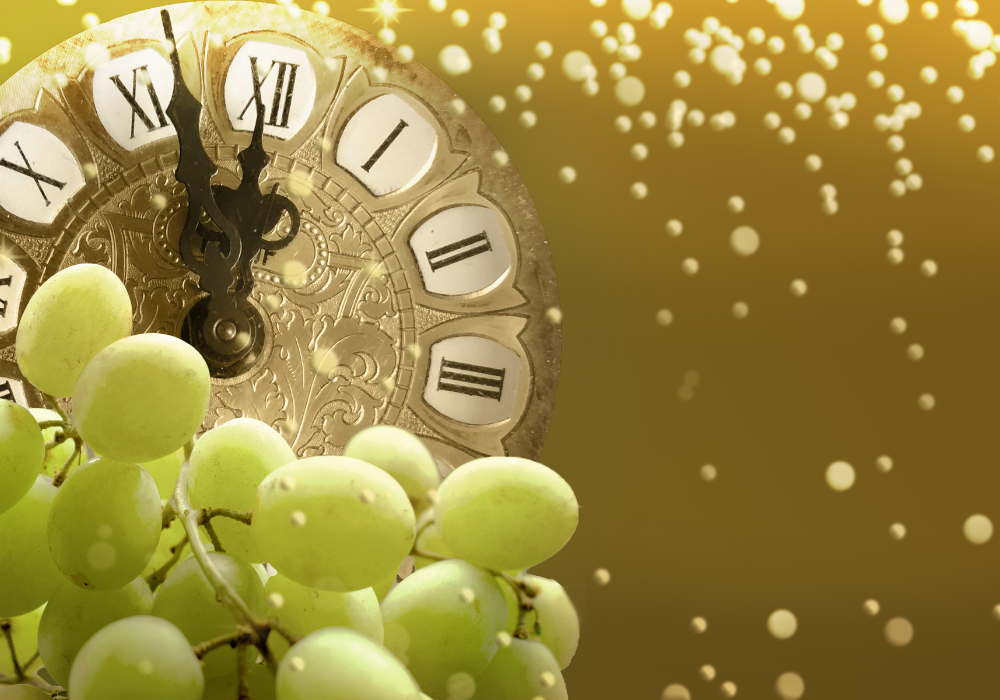New Year’s is one of the most celebrated holidays worldwide.
With many different cultures ringing it in with their own unique traditions, customs and rituals. From gathering in Times Square to watch the ball drop, to shoving as many grapes into your mouth as possible when the clock strikes midnight, let’s take a look at a few interesting ways different cultures will be celebrating this year.
Spain – Las Doce Uvas de la Suerte
In Spain, a well-loved tradition dating back to 1895 is that of the Twelve Grapes, where each celebrant keeps exactly twelve grapes in their clutches until the clock strikes midnight.
For each of the twelve chimes into the New Year, everyone must attempt to eat one of the grapes, symbolizing a prosperous and lucky New Year filled with abundance and good fortune. This results in a hilarious, chaotic sight to behold as everyone races to finish their handful first!


Japan – 年越しそば
New Year’s is a family celebration at its core, with many Japanese families gathering to clean and decorate their homes in preparation for a fresh start. Some attend Hatsumōde (初詣), otherwise known as the first visit to temple, to pray for a good year ahead.
Toshikoshi Soba, or New Year’s Eve Noodles, (年越しそば) is a widely enjoyed delicacy, symbolizing release from any negativity or misfortunes from the past year. Each year, families across Japan share in slurping at this hearty, healthy and warm dish while wishing for good fortune, and a clean slate as they ring in the New Year.
Turkey – Yeni yıl gün
Many Turkish celebrants take part in rituals to help influence the year ahead. Many families begin New Year’s Eve with a meal, play games, and party until midnight. Some try their luck by purchasing a lottery ticket to start the New Year off with newfound wealth.
It is also common for anyone seeking new romance to wear Red on New Year’s. Smashing and gifting pomegranates, or sprinkling salt in doorways, is seen to bring good luck for the next year.


Russia – Новый Год
Unlike many countries, New Year’s celebrations are deemed of higher importance than Christmas in Russia. This is a time to prepare extravagant dinners that many Russians have spent the past year waiting for. Tables are filled to the brim with food, including pelmeni, pickled vegetables and meats, and chocolate candies.
While this is a time for indulgence, it is also a way to invite abundance into the New Year, ensuring good fortune, wealth, and good food for all throughout the next 12 months.
Brazil – Festa de Iemanjá
In Afro-Brazilian cultures, specifically the Candomblé religion, the New Year is celebrated with the Festival of Iemanjá, the Goddess of the Sea.
Participants don new clothing, run into the sea, and jump the seven waves to make seven wishes for the year ahead. Sometimes, fishermen in coastal towns load their boats with gifts and set them off to sea. These gifts include anything from flowers, to perfumes.
These offerings are also made to Iemanjá so that she will return her protection, with calm seas and an abundance of fish.


culturally intelligent communications
By ensuring your message is culturally accurate, you can bridge gaps in your communication and foster true human connections in any language. Chat to a member of our team to get started.
